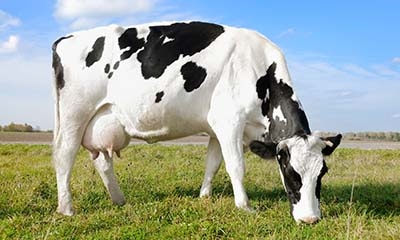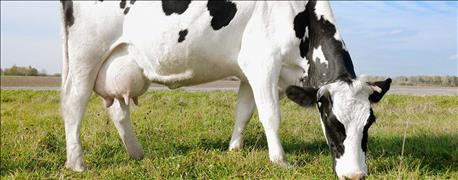
On the surface, a “strong” U.S. dollar sounds like a good thing, right? Well, not when you have to compete in the world marketplace where demand is based on weaker currency values. That’s a handicap for U.S. dairy product exports which is hamstringing farm gate milk prices.
A recent analysis of cash receipts in Pennsylvania from 2015 milk marketings tells the story. Producer returns averaged $18.50 per hundredweight – 28% below 2014, reports King Whetstone, director of the Northeast regional office of USDA’s National Ag Statistics Service.

Strong U.S. dollar is a handicap for U.S. dairy product exports, which is hamstringing farm gate milk prices. (Photo: Dmitry Kalinovsky/Thinkstock)
But the world’s dairy industry is sharing the price pain, says Jim Dunn, ag economist at Penn State University. Frontera has cut the price it pays for Australian milk by 12% following a similar action by Murray Goulburn. They’re the two biggest Aussie buyers. European Union milk production has risen since quotas ended last spring.
With the Russian embargo still restricting EU dairy product imports, too much milk is floating in world markets to sustain dairy product prices. And, adds Dunn, still-rising U.S. milk production doesn’t bode well for U.S. dairy exports, either.
Any good news?
Cheese futures prices are higher for contracts maturing later this year, by 18 cents a pound for December 2016, says the Penn State economist. Dry product futures are also higher as the year progresses, especially non-fat dry milk powder – 28% higher by yearend. That suggests a weaker dollar later this year, which would greatly help U.S. export competitiveness.
Butter prices, too, seem to reflect that future events will be positive, despite high inventories and lagging exports. And despite the economy, the domestic cheese market is stronger.
Milk and feed outlook
Dunn estimates the April Pennsylvania all-milk price to be $16.52 per hundredweight. But May and June prices may be 1% lower, at about $16.40.
Dairy futures market prices show higher milk prices by mid-summer, with Pennsylvania’s all-milk price up $2.50 by year end. Class III prices may average $13.91/cwt. for the rest of 2016, with Class IV futures prices averaging $14.19.
Dunn’s 2016 forecast for the average Pennsylvania all-milk price $17.63 – $0.84 below the 2015 average. Overall, this price outlook remains weak.
Corn and soybean meal markets rose 6% and 27%, respectively, in the past month. Soybean prices climbed 12.6%. With high world inventories of feed grains and oilseeds, it’ll take a lot of bad weather news to dramatically increase feed prices.
Since feed prices are expected to stay reasonable, moderate futures market milk price increases for the second half of 2016 should increase income over feed costs. But rising U.S. milk production is problematic. More milk production nationally is certain to slow the price rise.
About the Author(s)
You May Also Like




